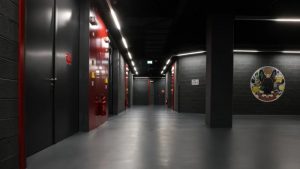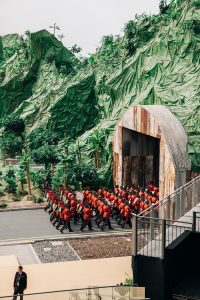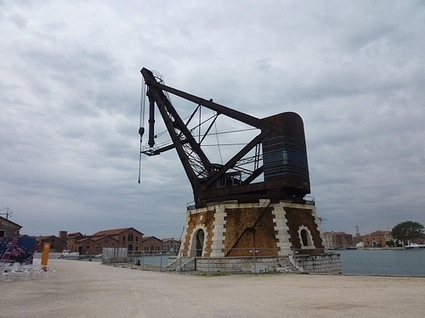
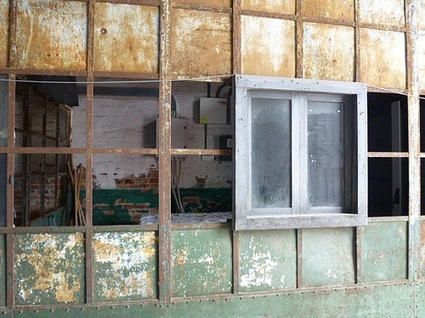
What makes the Venice biennale so special to me is that part of the exhibition takes place in the Arsenale, a complex of shipyards and armories that used to be the largest industrial complex in Europe prior to the Industrial Revolution. The wikipedia entry reads like a novel: different areas of the historic naval yards each produced a particular prefabricated ship part or other maritime implement. The parts could then be assembled into a ship in as little as one day. The navy owned a nearby forest that provided the Arsenal’s wood supply. In 1593, they even had Galileo work as an external consultant.
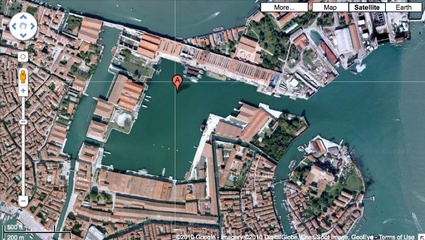 The Arsenale on google maps
The Arsenale on google maps
The biennale exhibition occupies only a part of the Arsenale called the Corderie. Built in 1303, restored in the 16th century, this 6400 sqm surface used to host the manufacture of hawsers, cables and thick ropes.
Unlike most critics and visitors, i can’t say that the exhibition of 12th biennale of architecture is particularly exciting. Call me a masochist but i missed being slapped in the face with crucial issues such as the rise of the megapolis, unrestrainable traffic, sustainability, the necessity to provide shelter for populations fleeing conflicts and natural disasters, etc. I missed the overdose of information we were submitted to in 2006. I also missed the extravagance and the speculation of the 2008 edition. The 12th biennale of architecture is mostly about aesthetics and celebration of the discipline.
What i did enjoy more than any other year however was the way Kazuyo Sejima -who directed the event this year- played with the architecture of the Corderie. There was air, grace and gaiety:
Olafur Eliasson has visitors take a leap in the dark where water hoses hanging from the ceiling spray water around in spasms that appear to be frozen in time and shaped with each flash of the stroboscopic lightening (Domus has a video.)
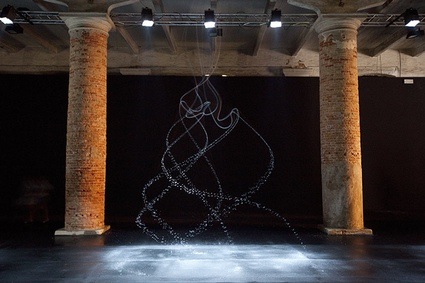 Olafur Eliasson, Your split second house, 2010. Photograph: David Levene for the Guardian
Olafur Eliasson, Your split second house, 2010. Photograph: David Levene for the Guardian
An enormous room was filled with tiny chairs for people to sit and watch video of architects being interviewed by Hans Ulrich Obrist.
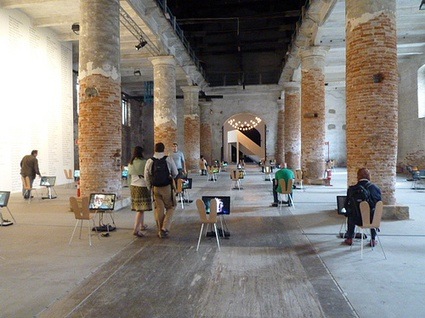
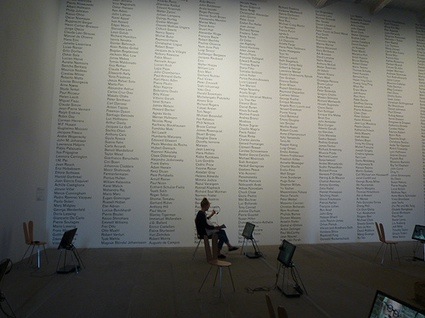 Anton García-Abril and Ensamble Studio disrupted the scale and harmony of the Corderie with two enormous concrete I-beams that appear to keep their balance thanks to the mere power of a rock and a coil spring.
Anton García-Abril and Ensamble Studio disrupted the scale and harmony of the Corderie with two enormous concrete I-beams that appear to keep their balance thanks to the mere power of a rock and a coil spring.
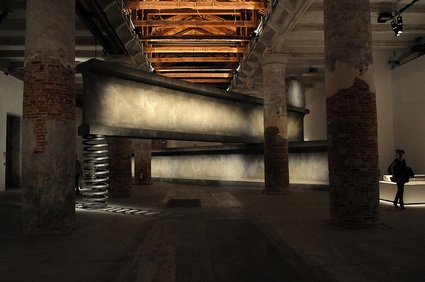 Anton Garcia-Abril – Ensamble Studio, Balancing Act, 2010. Photo: Giorgio Zucchiatti
Anton Garcia-Abril – Ensamble Studio, Balancing Act, 2010. Photo: Giorgio Zucchiatti
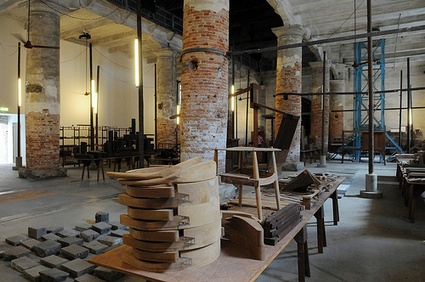 Studio Mumbai, Work-Place. Photo: Giorgio Zucchiatti
Studio Mumbai, Work-Place. Photo: Giorgio Zucchiatti
Studio Mumbai has piled up wooden building elements over models, tools, materials, samples and tiles in one of the big exhibition spaces of the Arsenale, creating a feeling of intimate, welcoming and controlled chaos. The space speaks of an architecture more akin to craftsmanship and physical labour than neat plan drawings and models.
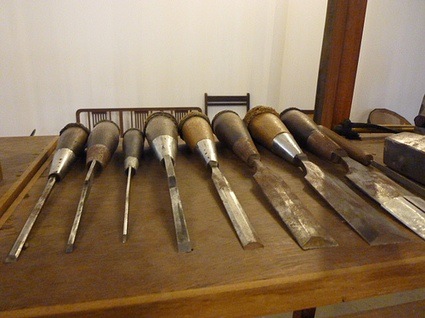 Studio Mumbai, Work-Place
Studio Mumbai, Work-Place
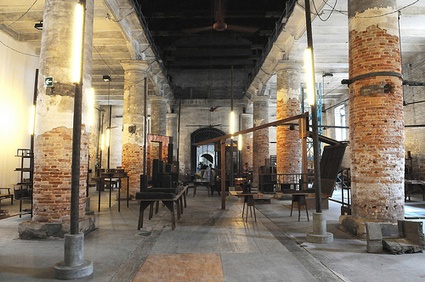 Studio Mumbai, Work-Place. Photo: Giorgio Zucchiatti
Studio Mumbai, Work-Place. Photo: Giorgio Zucchiatti
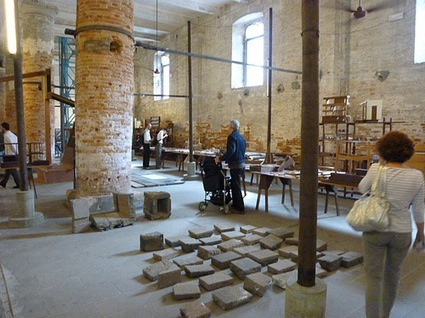 Studio Mumbai, Work-Place
Studio Mumbai, Work-Place
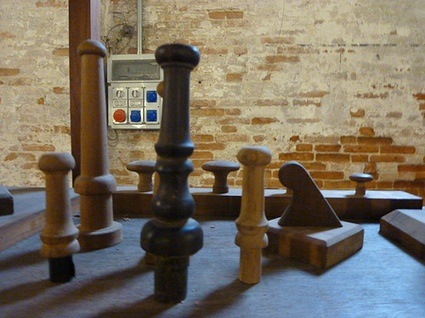 Studio Mumbai, Work-Place
Studio Mumbai, Work-Place
Swiss architects Valerio Olgiati defends with a stunning tunning 1:33 model his view that architecture does not have to be primarily contextual. According to him, architecture can grow out of an idea or concept that are completely separate from any context.
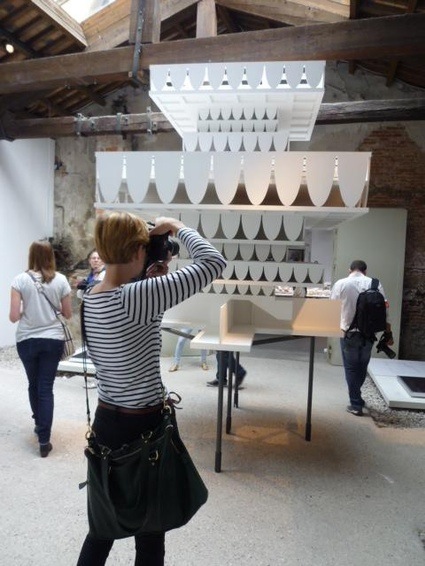 Valerio Olgiati, Perm Museum XXI, Perm, Russia, 2008
Valerio Olgiati, Perm Museum XXI, Perm, Russia, 2008
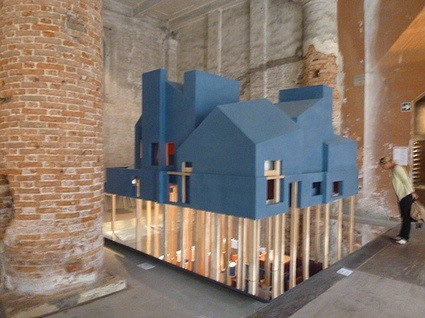 architecten de vylder vinck taillieu, ordos 100
architecten de vylder vinck taillieu, ordos 100
architecten de vylder vinck taillieu is showing the fascinating model of an un-built project, a large house in Ordos, Mongolia. The dwelling was part of Ordos 100, a project, conceived by Ai Weiwei and curated by Herzog and de Meuron, where 100 young architects were invited to design 100 villas in 100 days. Mirrors placed underneath the model allow for a look inside the house.
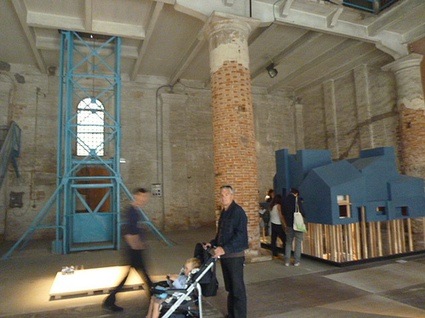
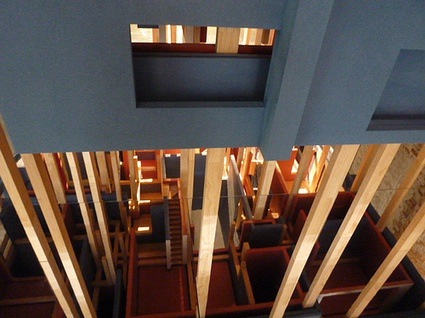 architecten de vylder vinck taillieu, ordos 100
architecten de vylder vinck taillieu, ordos 100
Kazuyo Sejima had invited artists to share with the public their perspective on space and architecture. Interested in how sound may physically construct a space in a sculptural way and how a viewer may choose a path through this physical yet virtual space, Janet Cardiff takes over one of the last rooms of the Corderie with The Forty Part Motet, an audio installation based on the Renaissance choral music Spem in alium nunquam habui by Thomas Tallis (1514-1585). Forty separately recorded voices are played through forty speakers strategically placed in an oval so that the listener can sit in the center of the choir and feel the sculptural construction of the musical piece.
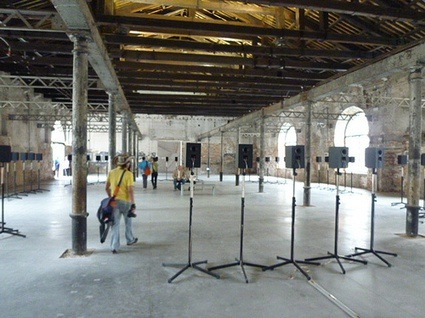 Janet Cardiff, The Forty Part Motet , 2001
Janet Cardiff, The Forty Part Motet , 2001
You can’t conceive an architecture without R&Sie(n), right? The French studio is showing ‘ thebuildingwhichneverdies ‘, a research laboratory of light intended to analyze human beings’ physiological adaptation to the dark. The structure also explores solar activity and the evolution of the ozone concentration in the stratosphere (more information and photos in designboom.)
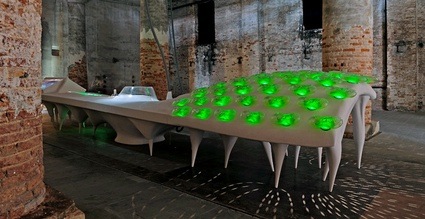 R&Sie(n), thebuildingwhichneverdies, 2010. Image R&Sie(n)
R&Sie(n), thebuildingwhichneverdies, 2010. Image R&Sie(n)
… and of course there was that Cloudscapes by Transsolar + Tetsuo Kondo.
The 12th Intl. Architecture Exhibition, directed by Kazuyo Sejima and titled People meet in architecture, runs until 21st November 2010.



